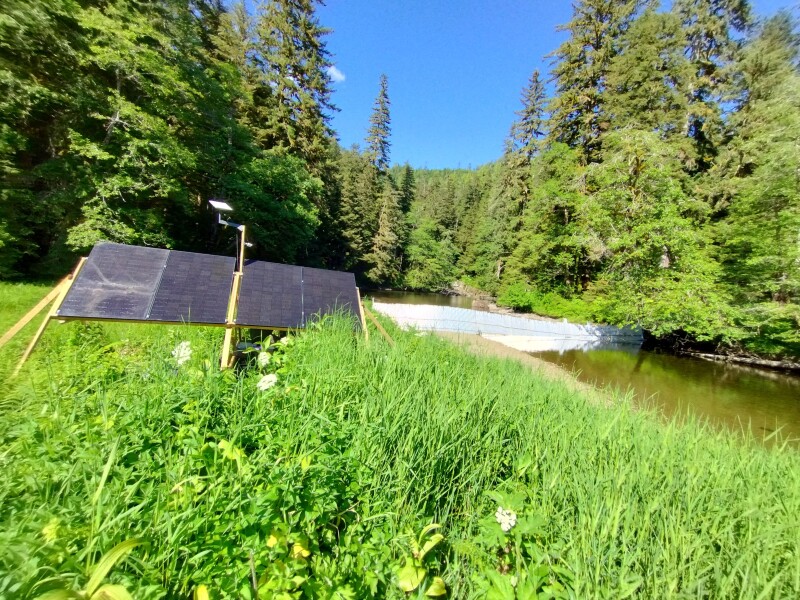Out in the rainforests of northwestern British Columbia, salmon runs are essential to First Nations communities that rely on fish for subsistence and income. After years of declining runs, several Nations have joined forces with scientists from Simon Fraser University, researchers from the Wild Salmon Center in Portland, Oregon, and the Pacific Salmon Foundation in British Columbia to track the restoration of runs on smaller rivers like the Koeye, Kitwanga, Bear, Kitkiata, and Kwakwa Rivers—homes to seven species of salmon and trout.
While there is limited information about the size of the salmon runs historically, Will Atlas from the Wild Salmon Center notes that while many runs are in steep decline, some coho and sockeye populations have seen improved recruitment over the last few years.
Doctor Jiangchuan Liu, the primary computer scientist on the project, explained that because rivers run through such remote areas, humans can’t sit out there counting fish. “The cameras can work all the time,” he says. “And they count every fish.” Dr. Liu notes that the capacity to deploy autonomous or semi-autonomous counting systems is important for smaller First Nations communities with large territories where they steward wild salmon and manage fisheries.
With funding from the British Columbia Salmon Restoration and Innovation Fund, the team from Wild Salmon Center, Pacific Salmon Foundation and the Heiltsuk, Kitasoo Xai’xais, Haida, and Gitga’at Nations, as well as the Gitanyow Fisheries Authority, and Skeena Fishery Commission, Dr. Liu and the Simon Fraser University team to build the monitoring system. The system uses the open-source YOLO algorithm, which employs a deep-learning convolutional neural network to detect discrete objects in an image. “The camera is a regular off-the-shelf camera you can get anywhere. It captures its size, shape, and color and sends the images to the cloud,” says Liu, noting that the program puts a bounding box around each fish and identifies it.
To get an accurate count, a weir funnels fish into a 16-inch by 16-inch by 3-foot chute where a motion detector activates a camera. At night the box is illuminated so that no fish are missed, and the program counts fish that swim downstream, enabling researchers to get an accurate count of fish going upstream.
While their subsistence fisheries are the primary concern for the Nations involved in the project, commercial and recreational fishing industries will also benefit from accurate counts of fish entering the rivers, as well as enabling co-managers to set appropriate escapement goals. For the Nations, however, this is a case of 21st-century technology being used to protect and preserve traditional fisheries that go back tens of thousands of years.







